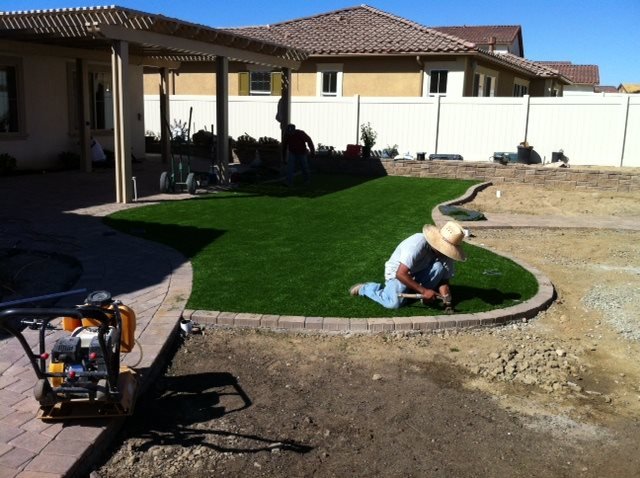If you’re planning to upgrade your outdoor space with a lush, green lawn, timing is everything—especially in a climate like Tilton, NH. Lawn installation is more than just spreading seed or laying sod. It’s about working with the natural conditions of your area to ensure long-lasting, healthy results. But when exactly is the best time for lawn installation in Tilton, New Hampshire?
Let’s break it down based on local climate patterns, lawn types, and professional recommendations so you can confidently plan your new lawn and get the most out of your investment.
Understanding Tilton, NH’s Climate
Tilton, NH is part of USDA Hardiness Zone 5b, meaning it experiences cold winters and moderate summers. The region sees significant snowfall and frost during winter and a relatively short growing season between spring and fall. Because of this climate, cool-season grasses thrive the most in this area, such as:
- Kentucky Bluegrass
- Perennial Ryegrass
- Fine and Tall Fescues
Each of these grass types has specific seasonal requirements for successful germination and establishment, which directly influences when you should schedule your lawn installation.
The Two Best Seasons for Lawn Installation
1. Early Fall (Late August – Early October)
Why it’s ideal:
Fall is widely considered the best time for lawn installation in Tilton and other parts of New England. Here’s why:
- Cooler air and warm soil: After a long summer, the soil remains warm while the air becomes cooler, creating the perfect environment for grass seed germination.
- Less competition from weeds: Many weeds begin to die off in the fall, reducing competition for nutrients and water.
- More rainfall: Fall usually brings consistent moisture, which helps the seeds settle and grow without the need for constant watering.
- Establishment before winter: Planting in early fall allows your lawn enough time to establish strong roots before winter dormancy kicks in.
Tip: If you’re planning to seed, aim to complete the installation by mid-October. Sod installation can be pushed slightly later, but you’ll want at least a few weeks of root establishment before the ground freezes.
2. Spring (Mid-April – Early June)
Spring is the second-best time for lawn installation, especially if you missed the fall window.
Pros of spring installation:
- Rising soil temperatures encourage quick germination.
- Consistent rainfall supports early growth.
- A full growing season ahead gives your lawn time to thicken and strengthen before facing the harsh winter.
Challenges of spring installation:
- Increased weed competition: Spring is prime time for crabgrass and other invasive weeds, which can choke out new seedlings.
- Shorter prep window: Spring weather can be unpredictable—snowmelt and spring rains might delay your installation plans.
To counter spring challenges, you may need to use a pre-emergent herbicide or opt for sod instead of seed if you’re concerned about weeds or time constraints.
When to Avoid Lawn Installation in Tilton, NH
1. Mid-Summer (Late June – August)
Installing a lawn during peak summer months is generally not recommended in Tilton.
- High temperatures and dry conditions put stress on young grass.
- You’ll need to water heavily and often, increasing both time and cost.
- Weeds grow aggressively, which can hinder grass growth.
However, if you must install a lawn during summer—such as for a new construction project—sod is your best option over seed. It provides an instant lawn and offers some resistance to heat when maintained properly.
2. Winter (Late October – March)
Tilton winters are long, cold, and often snowy—making lawn installation virtually impossible. Frozen soil, dormant grass, and heavy snow prevent root development. You’re better off preparing the ground in late winter and waiting until spring or fall to proceed.
Seed vs. Sod: Timing Considerations
Your installation method also affects your timing decision.
- Seeding is more cost-effective but time-sensitive. It works best during early fall or spring.
- Sod installation offers flexibility. Though still best done in fall or spring, it can tolerate broader seasonal windows, including early summer, with proper care.
Tips for a Successful Lawn Installation in Tilton
- Test your soil before planting to determine pH and nutrient needs.
- Clear the site of rocks, weeds, and old turf before installation.
- Add compost or topsoil to improve drainage and nutrition.
- Water consistently—especially in the first 2–3 weeks post-installation.
- Avoid heavy foot traffic on your new lawn until it’s fully established.
Final Thoughts
The best time to install a lawn in Tilton, NH is early fall, followed by spring as a strong alternative. These seasons provide the right combination of temperature, moisture, and growing conditions to ensure your grass establishes deep roots and grows thick and healthy.
Choosing the right timing is just as important as selecting the right grass or contractor. By planning smartly and working with local professionals, your new lawn can become the envy of the neighborhood—and thrive for years to come.
If you’re ready to schedule your lawn installation in Tilton, NH, don’t wait too long. Reach out to a local lawn care expert today to secure your spot during the ideal season!
